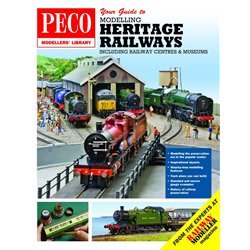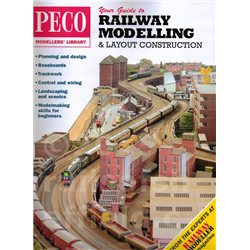Static grass puffer bottles work by manually charging model grass fibres with static electricity. When the charged...
No products
Product successfully added to your shopping cart
There are 0 items in your cart. There is 1 item in your cart.
Search Tips
What are the advantages of modelling a heritage railway?
Modelling a heritage railway offers several unique advantages that make it a rewarding project.
Nostalgia and Historical Interest: A heritage railway layout allows you to recreate scenes from Britain's rich railway past. You can bring to life the steam era or early diesel years, capturing the charm of a bygone age. Many modellers enjoy researching the history of specific lines, locomotives and rolling stock to create accurate representations of the railways they love.
Variety of Stock: Heritage railways often feature a mix of steam, diesel, and electric engines, as well as vintage carriages and wagons. This provides you with the opportunity to run a diverse range of stock on your layout, making operations more interesting and varied.
Realism and Detail: Many heritage railways in the UK are meticulously restored to their original condition. As a modeller, this gives you a wealth of real-life references to use for buildings, stations and infrastructure. You can recreate specific locations in fine detail, from accurately painted signal boxes to authentic platform furniture.
Operating Flexibility: One of the joys of heritage railway modelling is the flexibility in operating your trains. Unlike modern mainline operations, heritage railways often feature special event days, themed excursions and mixed-traffic workings. This variety can be mirrored in your model, allowing for different eras or types of rolling stock to run on the same layout.
Connection to Preservation: Many railway modellers also have an interest in the preservation movement, perhaps volunteering at a local heritage line. Modelling a heritage railway can deepen your connection to this world, allowing you to create a miniature version of a place you know well or have contributed to.
Scenic Opportunities: Heritage railways tend to run through picturesque rural or semi-rural settings, providing fantastic scenic modelling opportunities. You can replicate beautiful countryside, small villages, and traditional railway architecture that might be less prominent in more modern or urban layouts.
Overall, modelling a heritage railway combines a love of trains with history, detail, and variety, offering endless possibilities to create something personal and deeply connected to Britain's railway legacy.
Click here to receive the tips weekly in your mailbox. You can unsubscribe at any time.










